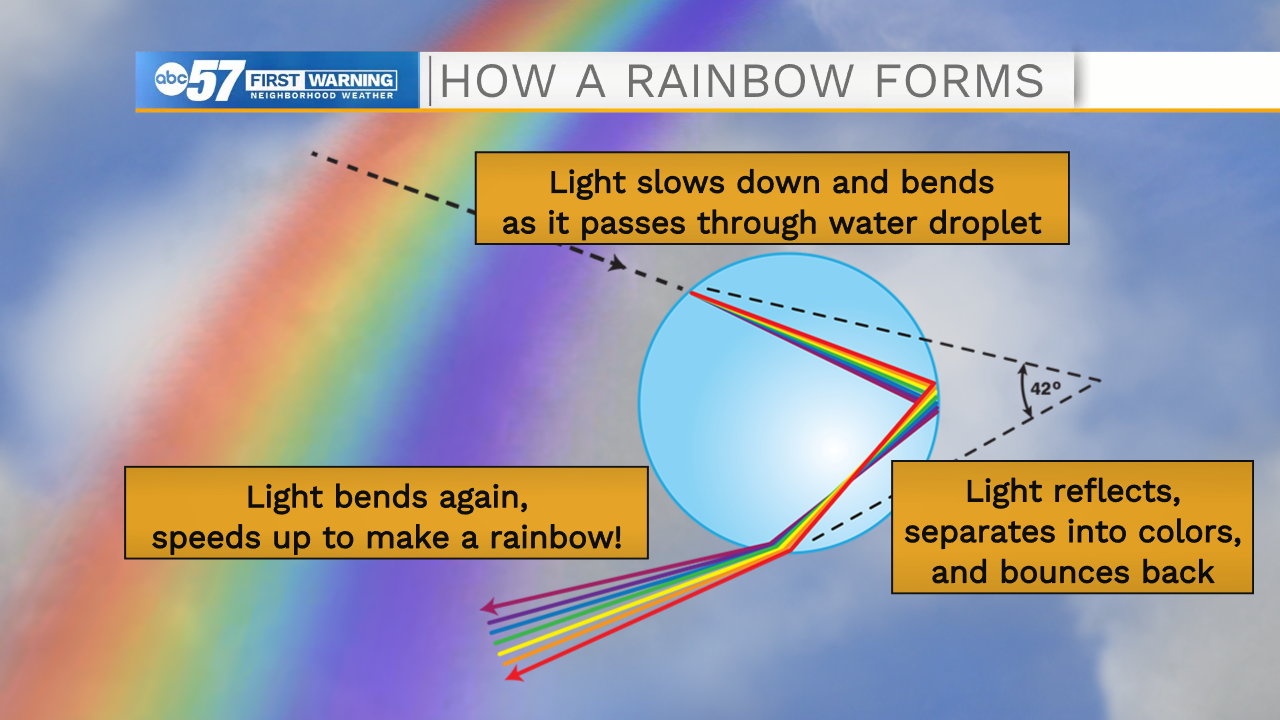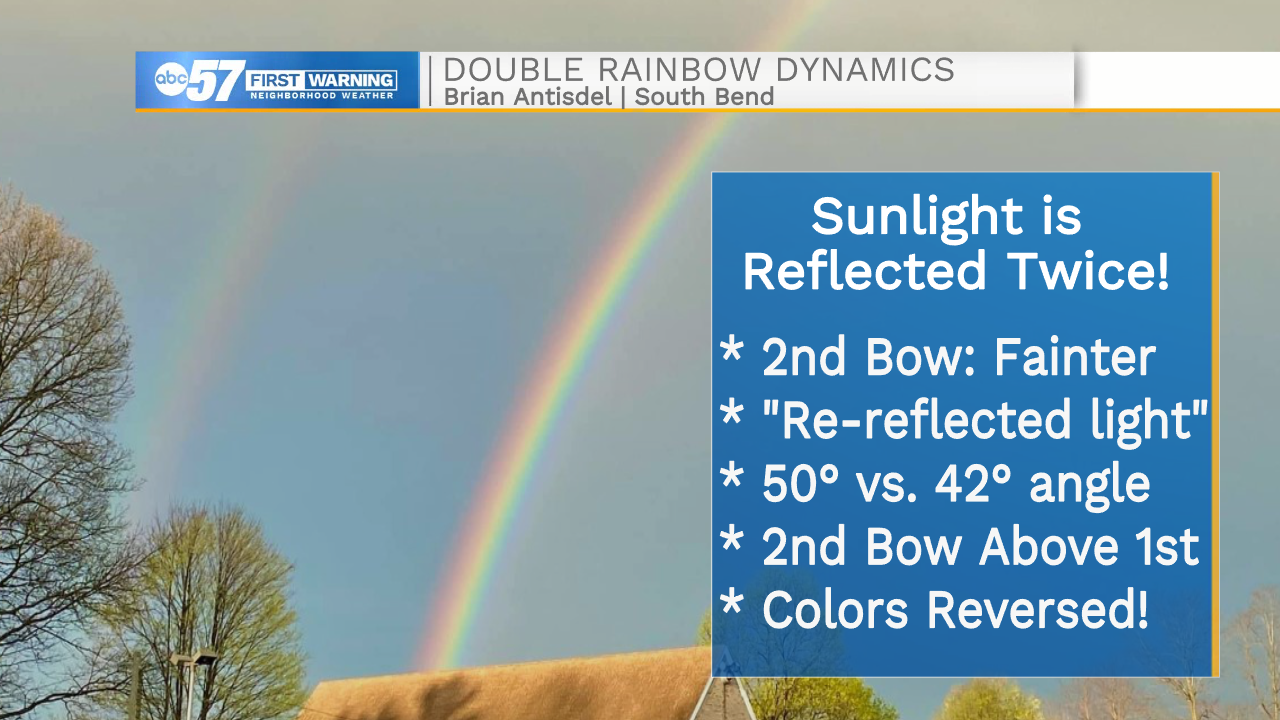Mother Nature provided a spectacular start to the workweek across Michiana on Monday in the form of vibrant rainbows.
A great pic of a double rainbow over our training tower this morning courtesy of Firefighter Melissa Brownfield. Happy Monday! pic.twitter.com/N8Qiqyd0EC
— SBFD (@SouthBendFire) April 12, 2021
We here at ABC57 News almost couldn't keep up with the inflow of beautiful weather photos!
My inbox ? was full of photos today ? @DaveCaulfield_ will explain the science of the vibrant colors today on @ABC57News pic.twitter.com/pWN9UJK4ex
— Tom Coomes (@TomCoomes) April 12, 2021
However, have you ever wondered about the science behind the beautiful, and sometimes elusive, sight?
Catching a glimpse of a rainbow is all about being in the right place at the right time. They aren't ever in a particular place, and they aren't really a "thing," either. They are an optical occurrence when light refracts through water droplets that you can see when you're in-between the sun and the exiting rain showers.
Let's break this down further.
Water is more dense than dry air. So, when light travels through water, it slows down and bends (refracts) as it passes through. It then reflects off of the droplet, separates into component wavelengths (individual colors), and bounces back toward the observer. Light bends again as it exits the water droplet and speeds up as it hits the dry air, and a rainbow is formed!
Some across Michiana did not only see one rainbow, but a delightful double-feature.
Snagging a picture of a double rainbow is an even harder task. While the science behind it is always taking place, conditions have to be absolutely perfect to see it.
The second bow is always fainter than the primary one because it is a "re-reflection" off of the initial water droplet. It also appears above the primary bow in the sky because it reflects at a higher angle (50 degrees versus 42 degrees).
And since the second bow is a reflection of a reflection, the colors are reversed compared to the first bow, with violet being the left-most color.
With no major chances for rain anytime soon, this may be the last taste of rainbows across Michiana skies for quite a while!


















